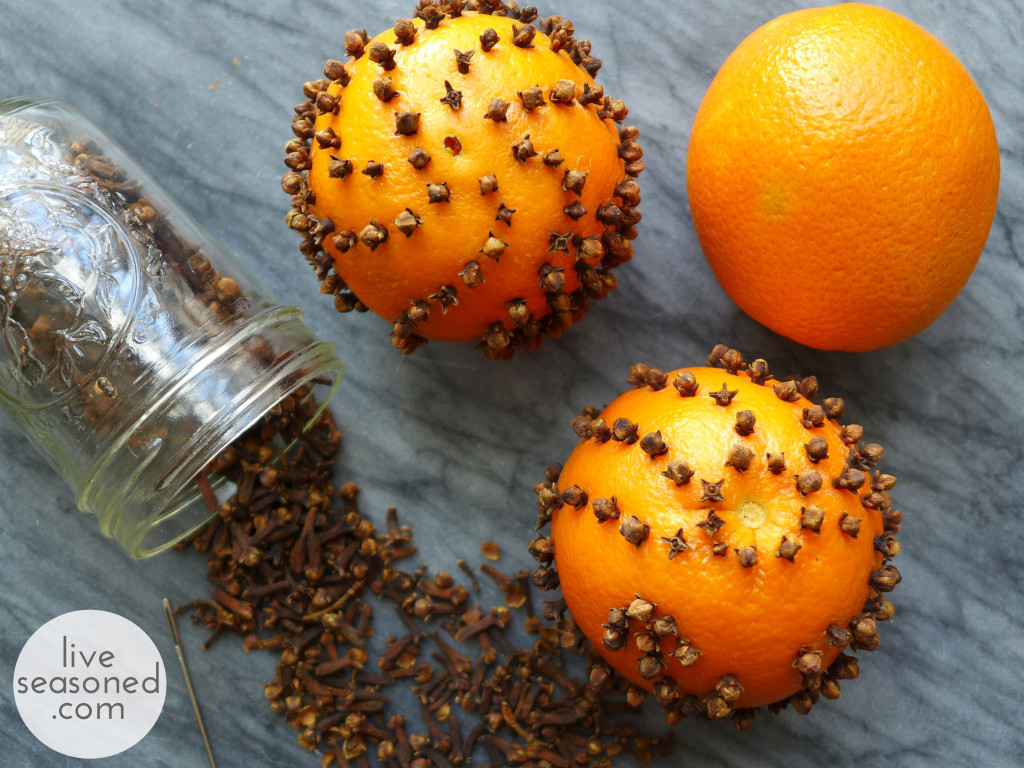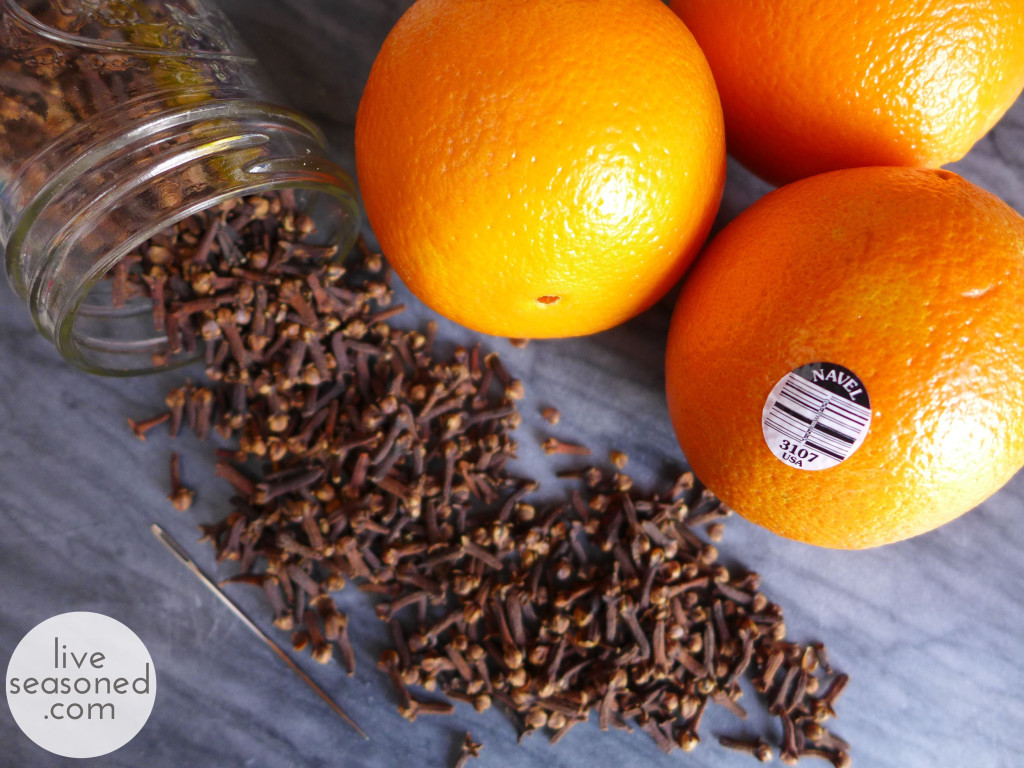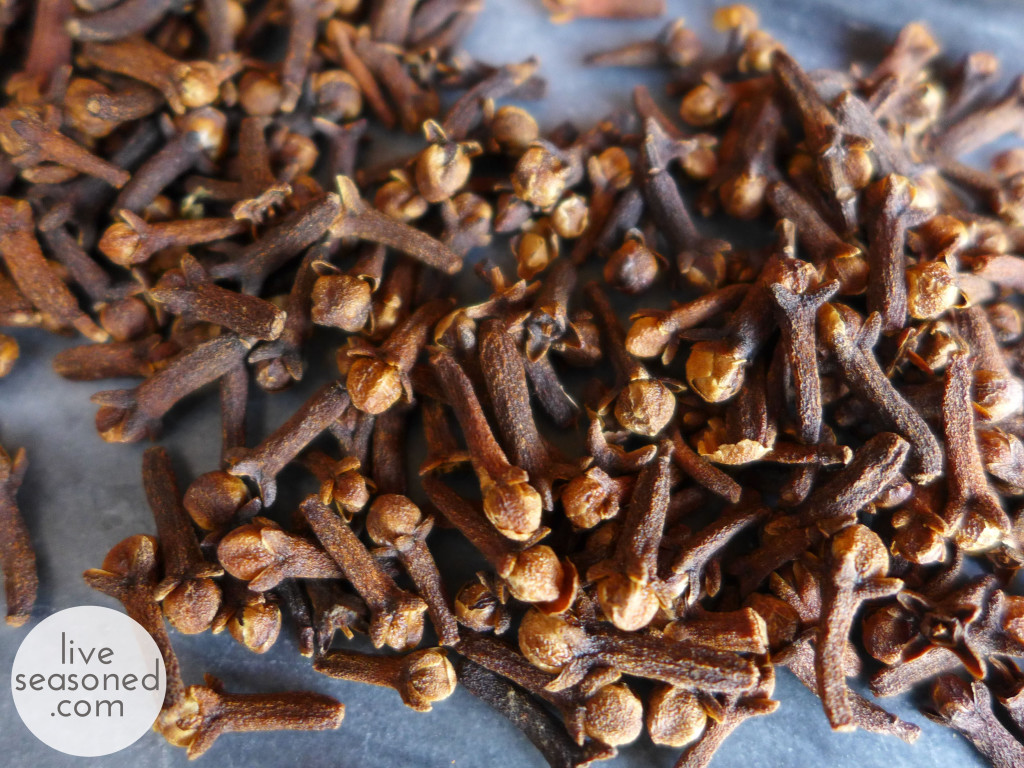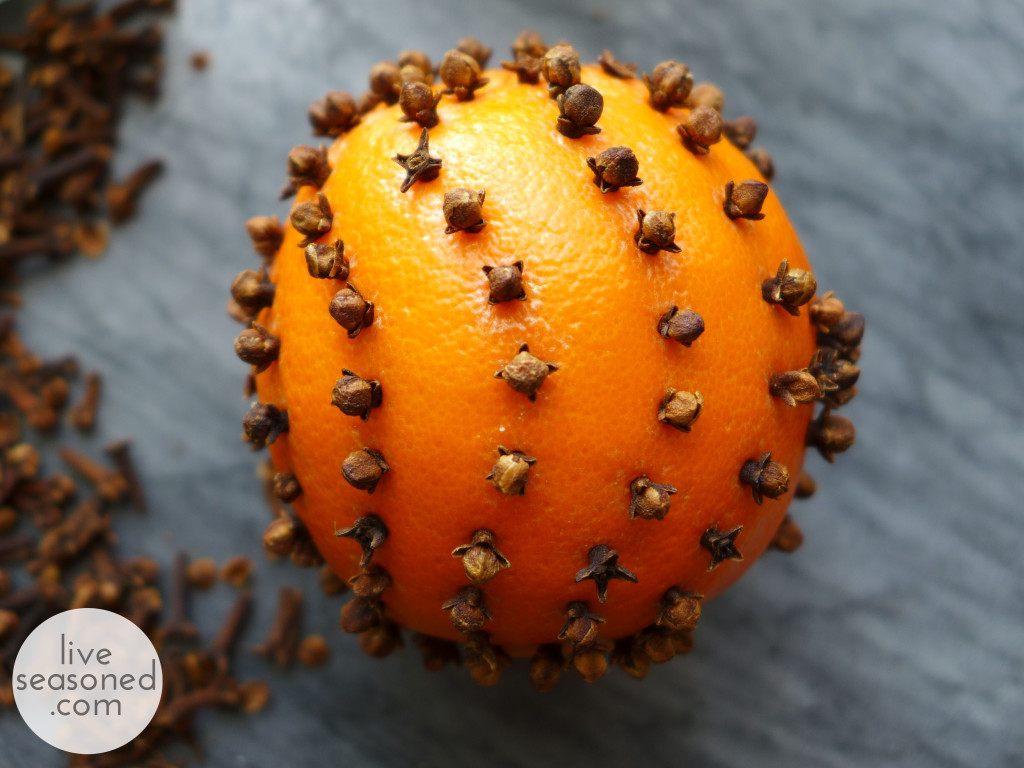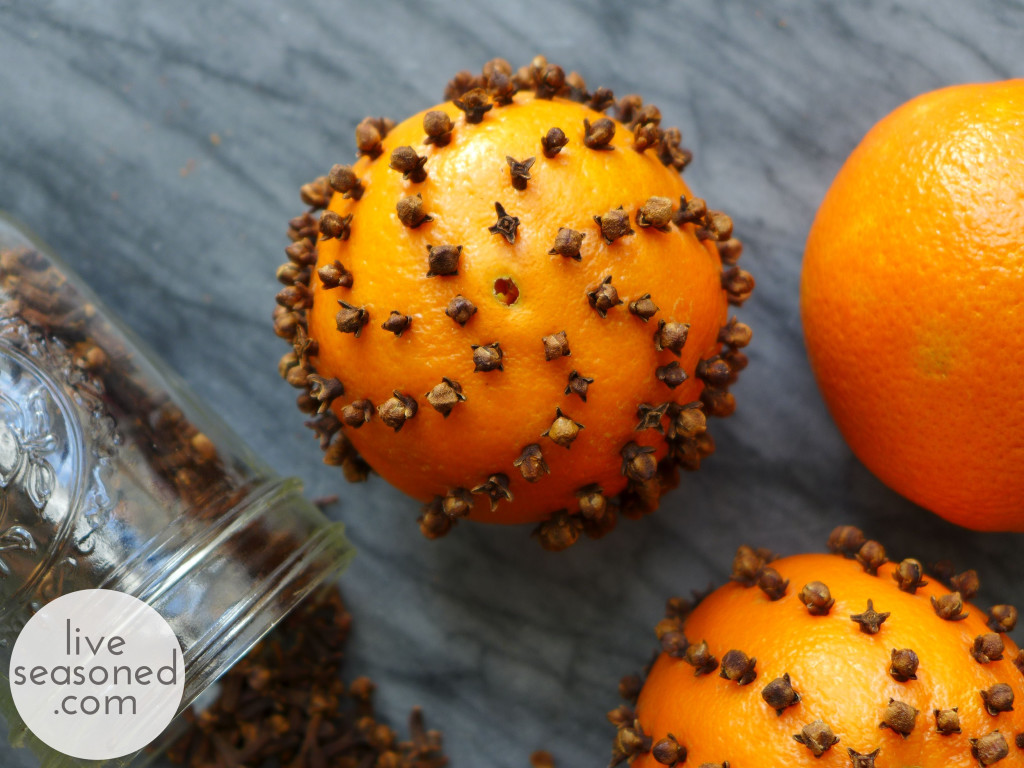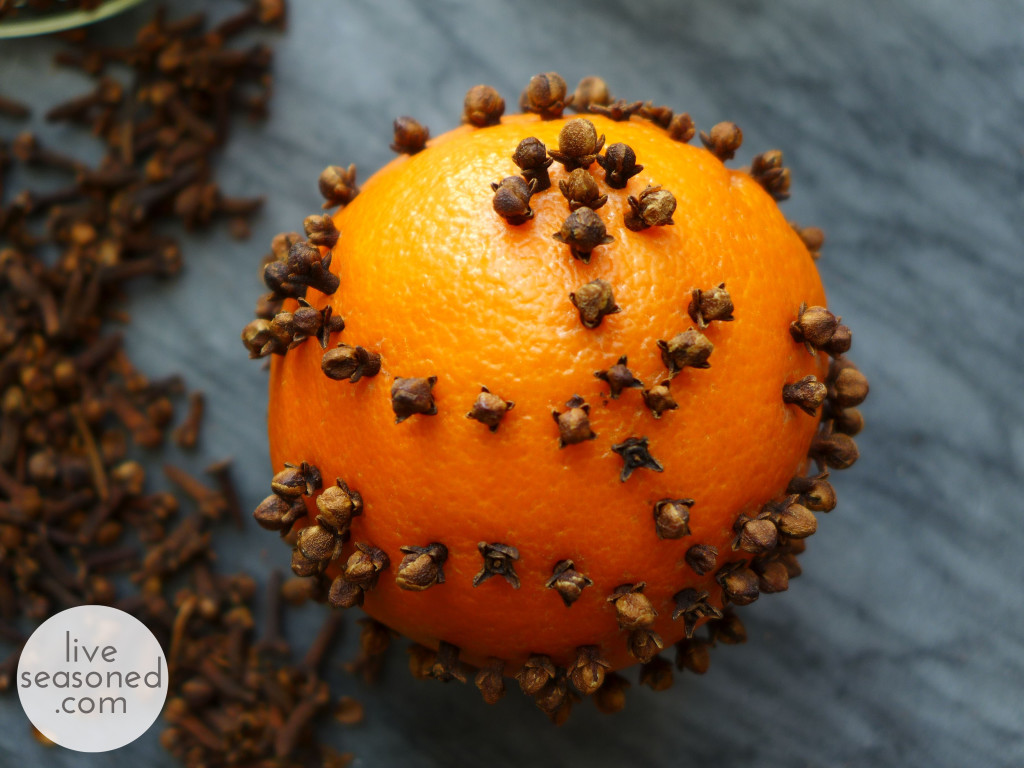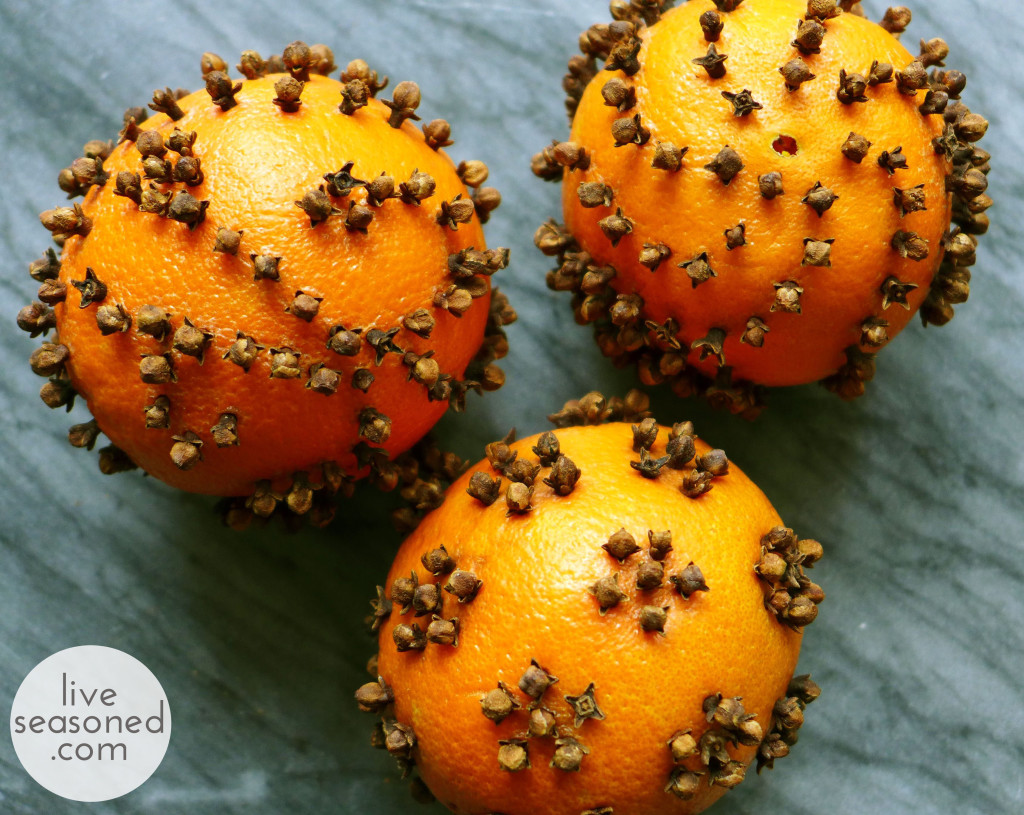Every season we like to pick one ingredient and find a variety of ways to love it and use it. You can find our complete ingredient archive here.
We’re decided that the orange, that zesty winter fruit, was the perfect choice as our ingredient of the season. As with past seasons, you can expect a slew of orange posts. The fruit will be a highlighted ingredient in our baking and candy making. We’ll use them around the house. And, of course, we have a few orange crafts up our sleeves; in fact, if you want to get a head start, you could make some dried orange garland!
We grew up ordering cases of oranges from our high school band’s fundraiser that would arrive around this time every year. As a result, we have fond memories of making our mom’s orangeade recipe (that she got from her mom), and it gave us our first education into the wide variety of oranges (note – use the hamlins for juicing, not the navels!). Having piles of oranges around the house at this time of year is such a tradition for us that we can’t think of a better ingredient to brighten our senses and the long, dark winter than oranges, and we’re excited to kick things off with a little profile of the fruit.
History
There are no known oranges growing naturally in the wild. It is believed that the species originated somewhere in Asia, possibly China or India, and that they were first cultivated in China in 2500BC. The sweet orange was not known in Europe until the 14 or 15 hundreds, having been brought to the Mediterranean region by Italian and Portuguese merchants. The orange then made its way to the Western Hemisphere with Spanish explorers in the late 1400s, and had spread across the US from California to Florida by the 1800s.
The word orange derives from a Sanskrit word for the fruit, nāraṅga. In English, and many other languages, the beginning “n” was dropped, and it is believed this happened when the word was translated into French, where the n may have sounded like it was part of the indefinite article preceding the word. For example, une norenge would have been the correct spelling, but would have sounded similar to une orenge. And you may have already guessed this by now, but the color orange was named after the fruit (something I’ve wondered when looking through my crayola 64 pack!).
Biology
Orange typically refers to the sweet orange, not bitter oranges or mandarins. The orange tree is an evergreen, flowering tree that grows primarily in the warmer climates of the tropics and subtropics, requiring a lot of sunshine and water to thrive.

One interesting fact about all citrus trees (oranges, grapefruits, lemons, limes, etc.) is that they appear to be interfertile, this means that they can interbreed, producing many hybrids. Due to this interfertility, it is difficult to keep track of the historical breedings that produced many of the varieties of oranges that are available today. It is believed that oranges are a hybrid between pomelos and mandarins. Since oranges are a hybrid, there are challenges to breeding the fruit. If you grew a plant from seed, it may be infertile or produce a fruit that is different from its parent plant. As a result, most propagation is done through grafting, creating clones of the parent tree.
Since the fruit often produces multiple seeds, is fleshy and soft, and derives from a single ovary, it is actually considered a modified berry! The fruit only ripen while on the tree (as opposed to avocados and bananas), but it is not unusual for the orange rind to remain partially green even on fully-ripe fruit. Recognizing that a green rind is unappealing to many consumers, ethylene gas, a common plant hormone, is often used to turn the rind of commercial fruit orange before they are sold. And knowing that the fruit will not ripen off the tree, there are laws in California, Florida, Arizona, and Texas that forbid the picking of unripe citrus for human consumption!
Varieties
There are many varieties of oranges, but some of the most common (at least in the States) are:
- Hamlin : A small, light-colored, juicy orange that’s perfect for juicing because it’s seedless. In season from October through December.
- Navel : A very popular variety. They are easy to recognize because a second fruit will start to grow at one end of the orange, creating a belly-button-like bump (similar to our navel, get it?). They are less juicy than other varieties, but having a thick skin that is easy to peel, making them a great snacking orange. In season from November through April.
- Valencia : Excellent for eating and juicing. A late season variety that ripens from March through June, making it a popular variety when most other orange trees are not in season.
- Blood Oranges : A natural mutation gives these oranges their red color, which comes from the production of class of pigments call anthocyanin. They were first discovered in Italy, but are now grown world-wide.

Do you have any favorite orange recipes, crafts, or uses? Fond memories of knowing that there would be an orange at the bottom of your stocking every Christmas? Or hoping to start a new tradition of Christmas morning mimosas? Let us know, we would love to hear!
Orange tree with blossom image from here. Orange color square from here. Indian River label from here. Indian River bushel graphic from here. Blood orange image from here. Navel orange from here. Black and white orange picker and boy from the LOC.

